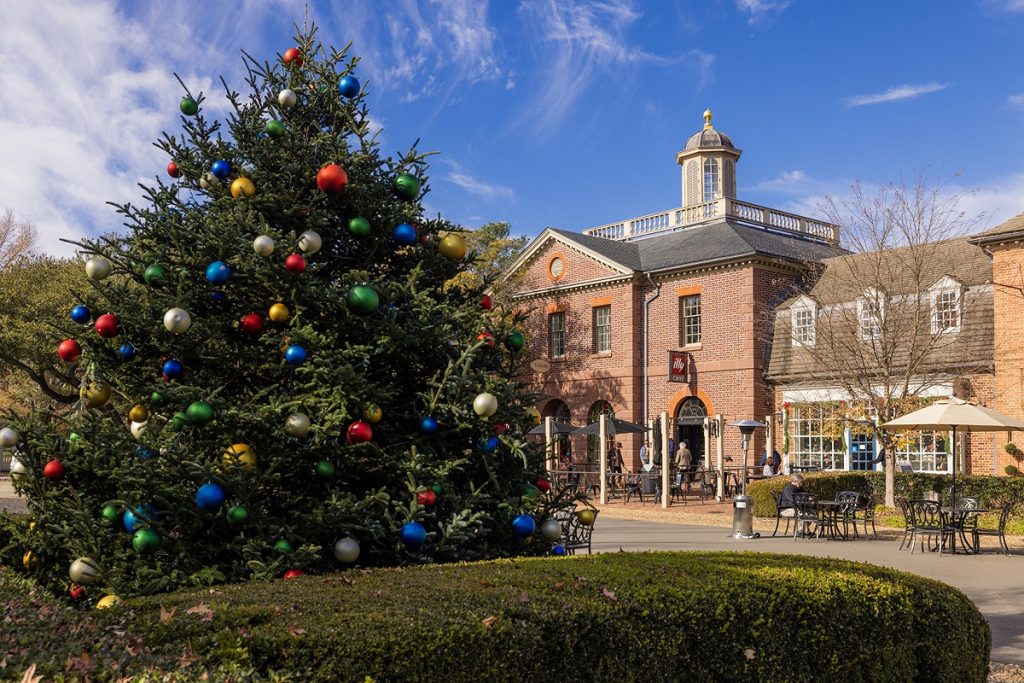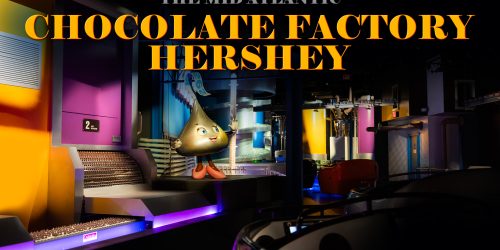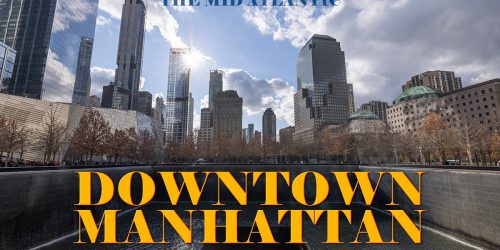A Historic Journey: Exploring the Charm of Williamsburg
After a stay in Chincoteague (where almost all establishments close for the off-season), we headed down south for the last stretch of drive along the Atlantic Ocean. The drive was peaceful as we crossed the Chesapeake Bay Bridge and Tunnel. The drive through the combining bridge and tunnel takes almost 30 minutes. It’s probably the longest bridge I have driven over yet and the tunnels give space to ships passing into the Chesapeake Bay.
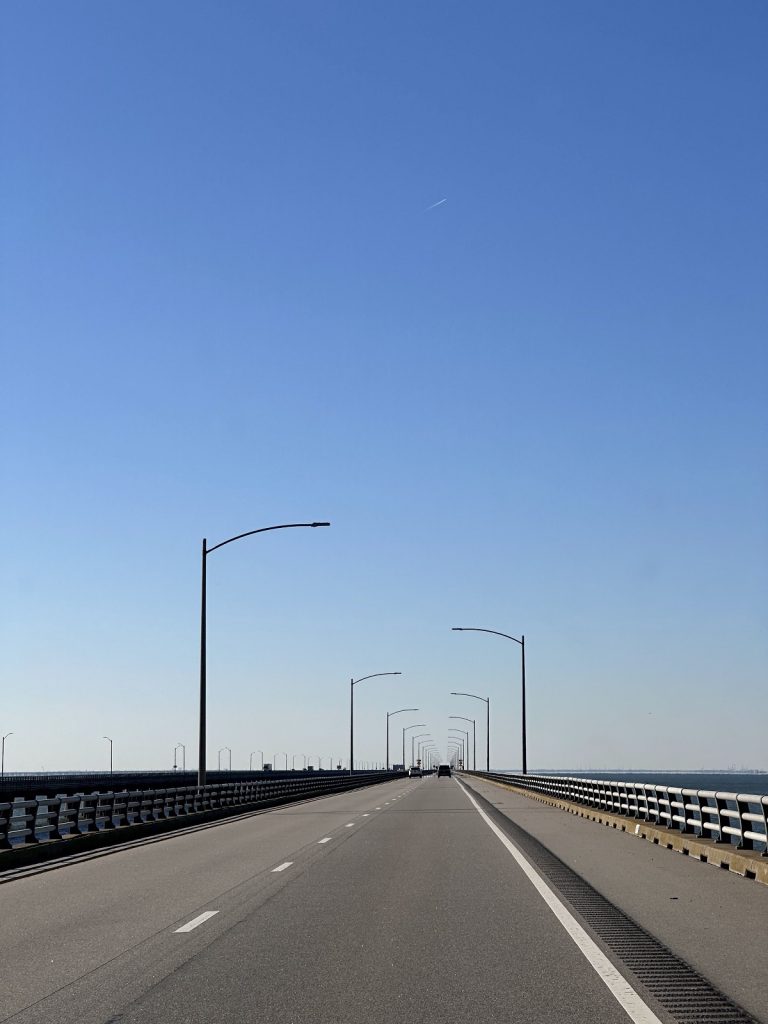
VIRGINIA BEACH
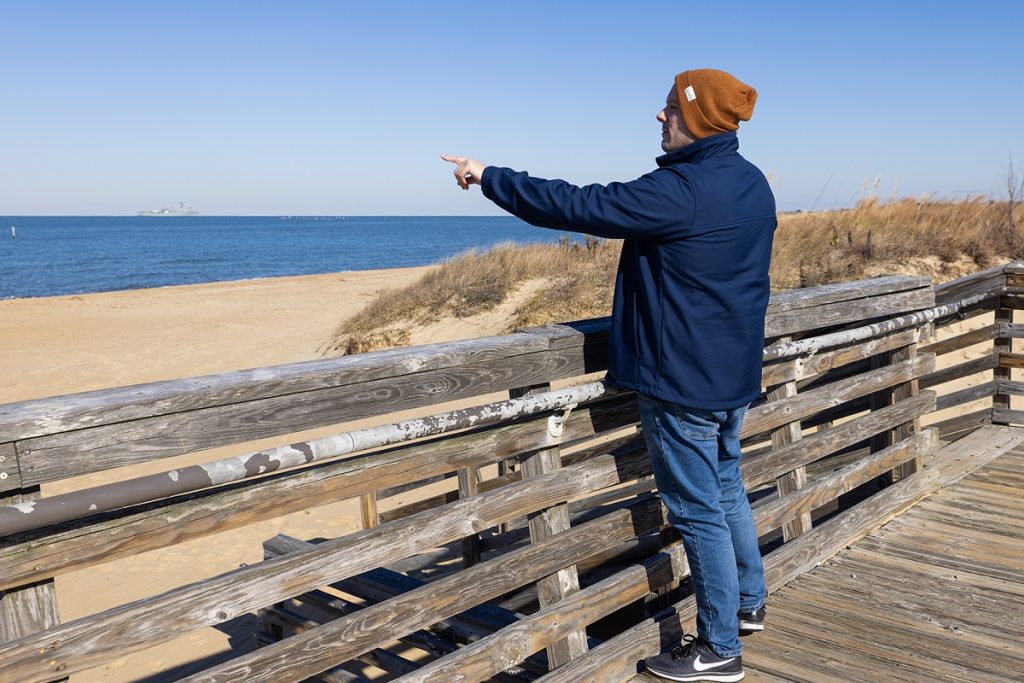
Our stay in Virginia Beach offered a unique experience as we found ourselves there on a cold day during the off-season. The normally bustling beach town wore a quiet charm as we strolled along the boardwalk. However, the off-season came with its own set of challenges – many establishments, including the iconic pier, were closed, and the lively beachfront that Virginia Beach is renowned for was transformed into a serene, desolate landscape. Despite the limited activities, the deserted beaches and the sound of crashing waves created a peaceful ambiance, allowing us to appreciate the raw beauty of the Atlantic Ocean. While our visit didn’t encompass the typical vibrant scene of Virginia Beach, the tranquility of the off-season offered a unique perspective, turning our stay into a quiet retreat by the seaside.
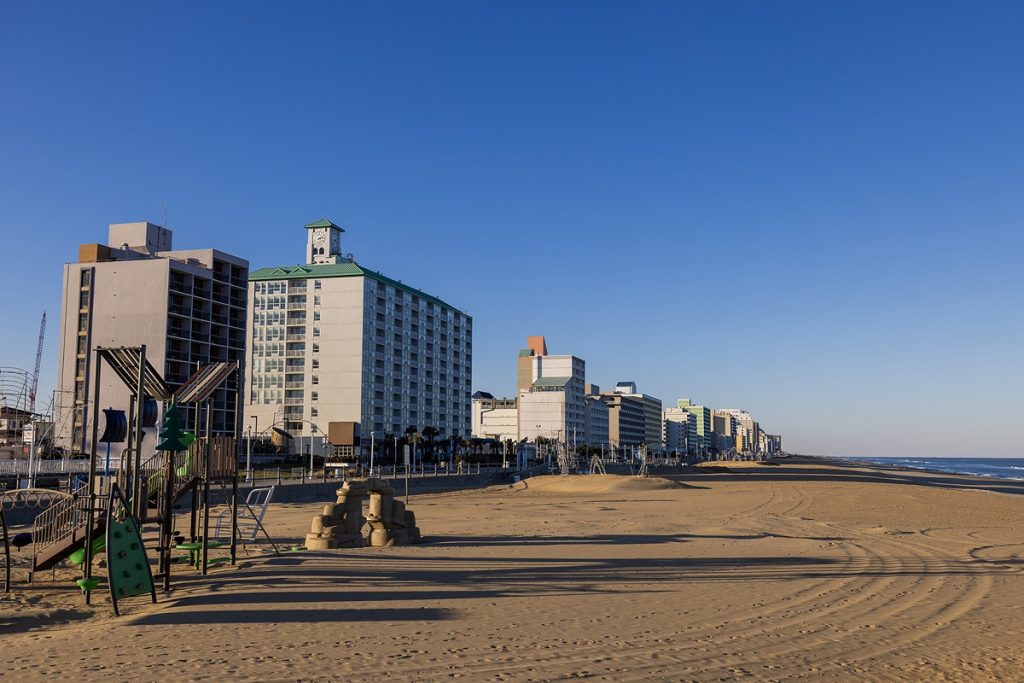
THE DRIVE FROM VIRGINIA BEACH
Leaving the coastal beauty of Virginia Beach behind, our journey to Williamsburg took us through scenic landscapes and quaint countryside. The drive itself was a delight, with stretches of open road and occasional glimpses of historical landmarks along the way. As soon as we drove off the highway the scenery changed and amazing forests surrounded us.
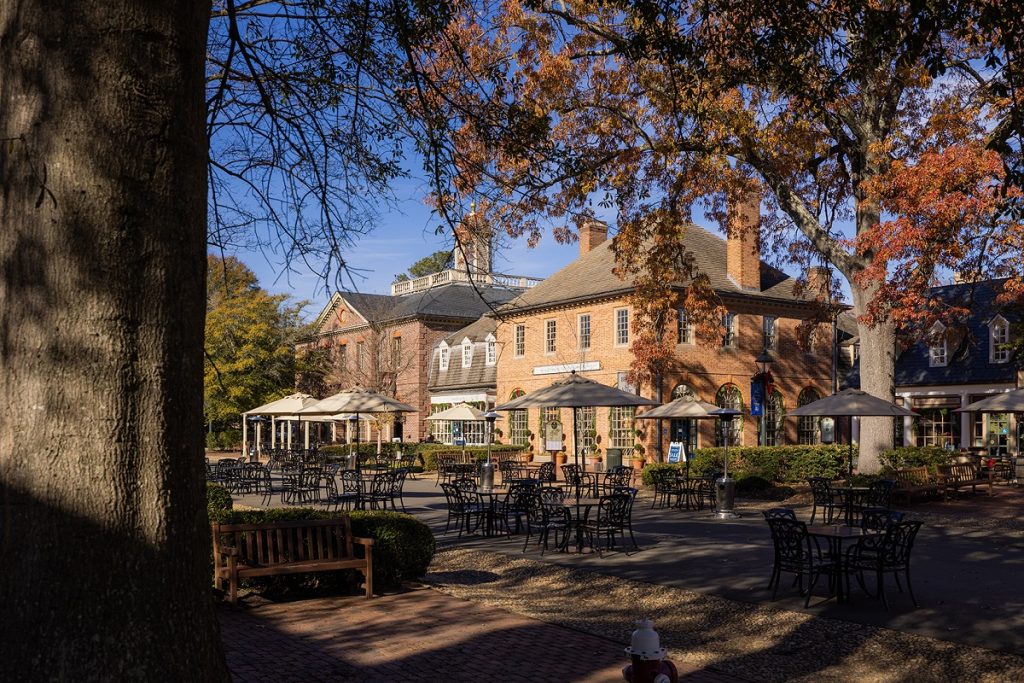
MORNING COFFEE IN WILLIAMSBURG
Upon reaching Williamsburg, we kicked off our day with a stop at a local coffee shop. The aroma of freshly brewed coffee filled the air as we sipped our drinks and planned our itinerary for the day. The charming streets of Williamsburg unfolded before us, inviting us to delve into its storied past.
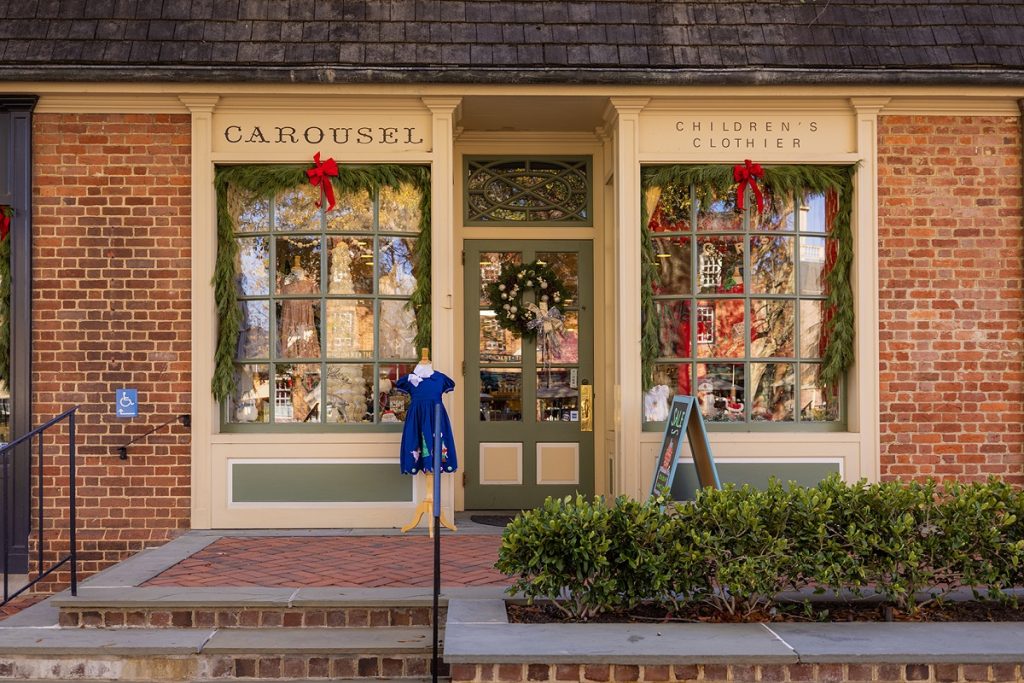
EXPLORING THE TOWN
Williamsburg, often referred to as the “Colonial Capital,” is a living history museum where visitors can step back in time to the 18th century. The town’s restoration to its colonial-era appearance allows visitors to immerse themselves in the sights and sounds of a bygone era. Cobblestone streets, brick buildings, and costumed interpreters recreate the ambiance of colonial life. There are people on the streets dressed up in old timey clothes, acting out the parts. It’s all very amusing!
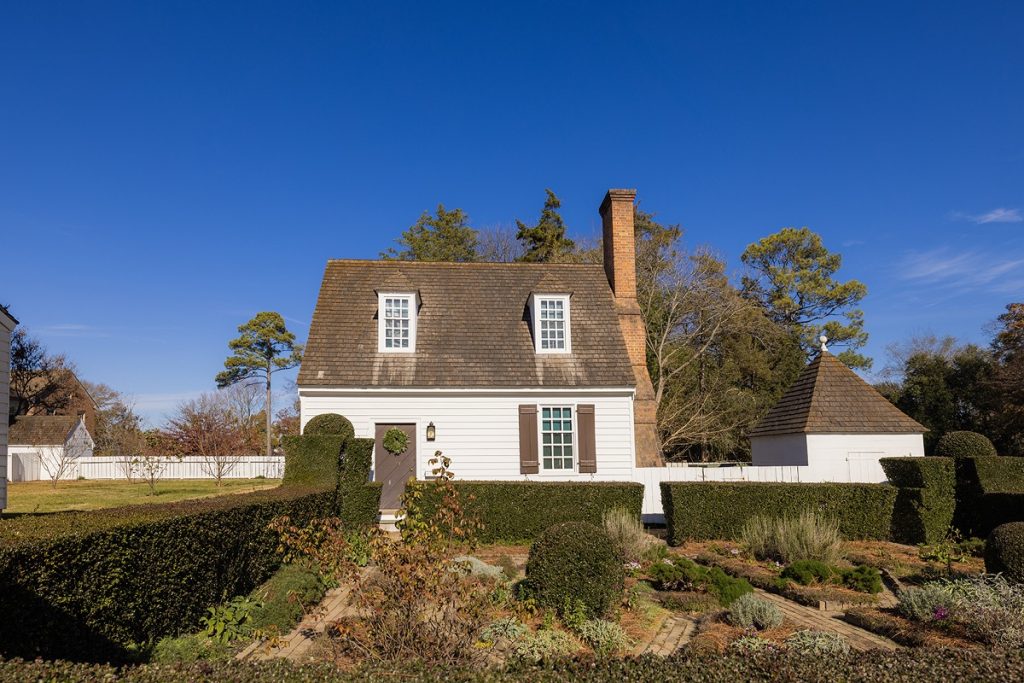
HISTORICAL SIGNIFICANCE
Williamsburg played a crucial role in American history, serving as the capital of the Virginia Colony from 1699 to 1780. Some of the most significant houses and landmarks include the Governor’s Palace, the Capitol Building, and the Bruton Parish Church. The Governor’s Palace, with its grand architecture and lush gardens, was once the residence of Virginia’s royal governors. The Capitol Building witnessed pivotal moments in the struggle for independence.
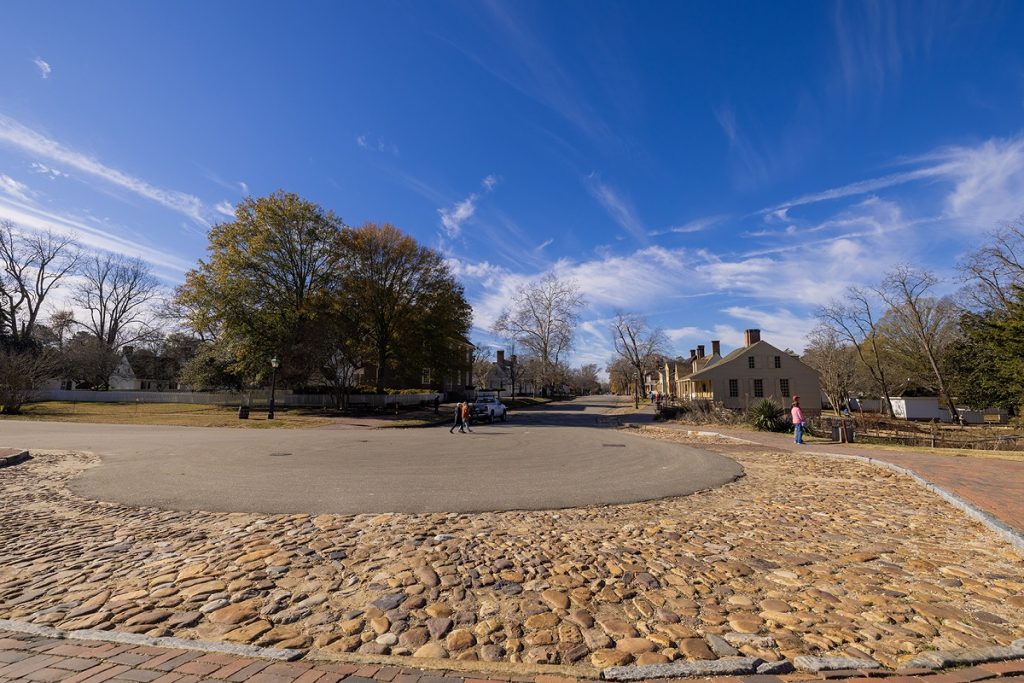
FUN FACTS ABOUT WILLIAMSBURG
- Duke of Gloucester Street: The main thoroughfare in Williamsburg, Duke of Gloucester Street, is often referred to as DOG Street by locals.
- Haunting Tales: Williamsburg is known for its ghostly encounters and is considered one of the most haunted places in the United States.
- Thomas Jefferson’s Influence: Thomas Jefferson, the third President of the United States, studied law at the College of William & Mary in Williamsburg.
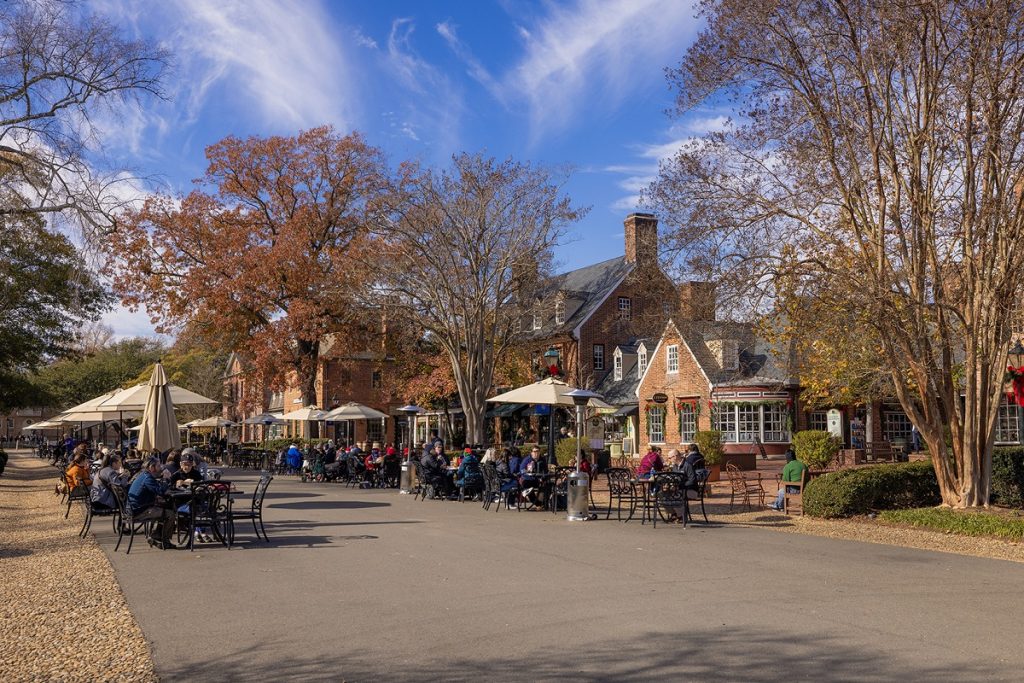
MOVING ON…
Our day in Williamsburg was a captivating journey through time, where each cobblestone and historical building spoke volumes about America’s colonial past. The town’s dedication to preserving its heritage made our visit truly unforgettable, leaving us with a deeper appreciation for the history that shaped the nation. We marched on towards Washington DC, but more on that in the next post.
